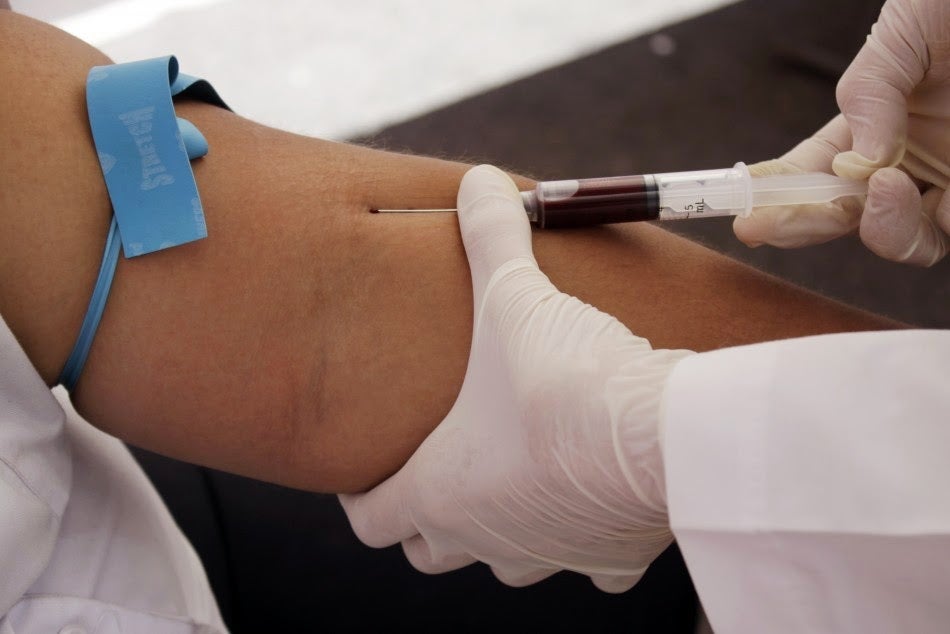Management And Diagnosis Of Hyponatremia

Hyponatremia is an electrolyte disorder that occurs when the concentration of sodium in the blood is well below what is considered normal. Sodium is an electrolyte whose main function is to help regulate the amount of water in and around cells.
In severe occasions, this disorder can cause significant damage. When this happens, the body’s water levels rise and cells swell. In this way, some health problems can arise. Do you know its management and diagnosis?
Symptoms of hyponatremia

As detailed in an Endocrine Connections file , the symptoms of hyponatremia can vary in each patient, depending on the evolution of the disorder. In any case, even if they seem mild signs, it is best to seek medical attention as soon as the disease is suspected. The clinical manifestations include:
- Eat.
- Seizures
- Disorientation.
- Headache.
- Nausea and vomiting
- Agitation and irritability.
- Loss of energy and tiredness.
Patients with chronic hyponatremia may have symptoms such as nausea, vomiting, cramps, visual disturbances, headaches, seizures, and coma. It is not very clear why, but hyponatremia is more common in young women and adolescents of both sexes.
Causes and risk factors
Sodium is necessary to maintain normal blood pressure, assist in the proper functioning of muscles and nerves, while regulating fluid balance in the body. Hyponatremia occurs when the sodium level is below 135 milliequivalents per liter. The normal level is between 135 and 145 milliequivalents per liter.
Some lifestyles and many diseases can cause hyponatremia, including the following:
- Medications : Medications such as some diuretics, antidepressants, and pain relievers can interfere with kidney and hormonal processes that keep sodium levels at healthy levels.
- Heart, Kidney, and Liver Problems – Congestive heart failure and diseases that affect the kidneys or liver can lead to fluid build-up in the body. For this reason, the sodium is diluted and the total level decreases.
- Syndrome of inappropriate secretion of anti- diuretic hormone . This condition causes the body to retain more water instead of excreting it normally in the urine.
- Chronic vomiting or diarrhea and other causes of dehydration.
- Drinking too much water : This excess water can overwhelm the kidneys’ ability to excrete water.
- Hormonal disturbances: Adrenal insufficiency affects the ability of the adrenal glands to produce hormones that help maintain the balance of sodium, potassium, and water.
- Age: Older adults may have more risk factors that contribute to hyponatremia.
- Strenuous physical activities : People who drink too much water while doing very strenuous activities are at higher risk of hyponatremia.
Diagnosis

The process of diagnosing hyponatremia is complex and requires several laboratory tests, as noted in a publication in the Indian Journal of Endocrinology and Metabolism . To confirm the existence of hyponatremia, it will be necessary to do:
- A good anamnesis.
- Osmolarity in blood and urine.
- Determination of ions in blood and urine.
- Physical examination of the patient to assess for signs of edema and dehydration.
Depending on the extracellular volume, three groups are distinguished:
- Hypovolemia: dehydration may be observed.
- Hypervolemia: edema is seen.
- Normovolemia: the sodium level is slightly increased.
In chronic hyponatremia, sodium levels gradually decrease over 48 hours or more. However, symptoms and complications are usually more moderate. In contrast, in acute hyponatremia, sodium levels drop rapidly, resulting in potentially more serious effects.
Treatment
When possible, treatment for hypothermia is directed at the underlying cause. If it is moderate and chronic hyponatremia due to diet, diuretics or excessive water consumption, the recommendation to follow will be to reduce fluid consumption.
However, in other cases, the diuretic regimen must be readjusted in order to increase the level of sodium in the blood. If the hyponatremia is severe and acute, the treatment will be more aggressive, and it will be administered in hospital centers.
Some of the possible options are as follows:
- IV fluids: In these cases, an IV sodium solution is given to slowly increase sodium levels in the blood. It should be controlled so that it is slow because if it is corrected too quickly it can be dangerous.
- Treatment drug : drugs are prescribed to control the signs and symptoms of hyponatremia, such as headaches, nausea and convulsions.
In conclusion, hyponatremia is a disorder that carries considerable risks. Therefore, before any manifestation of it, it is essential to go to the doctor to receive a timely diagnosis and treatment.








